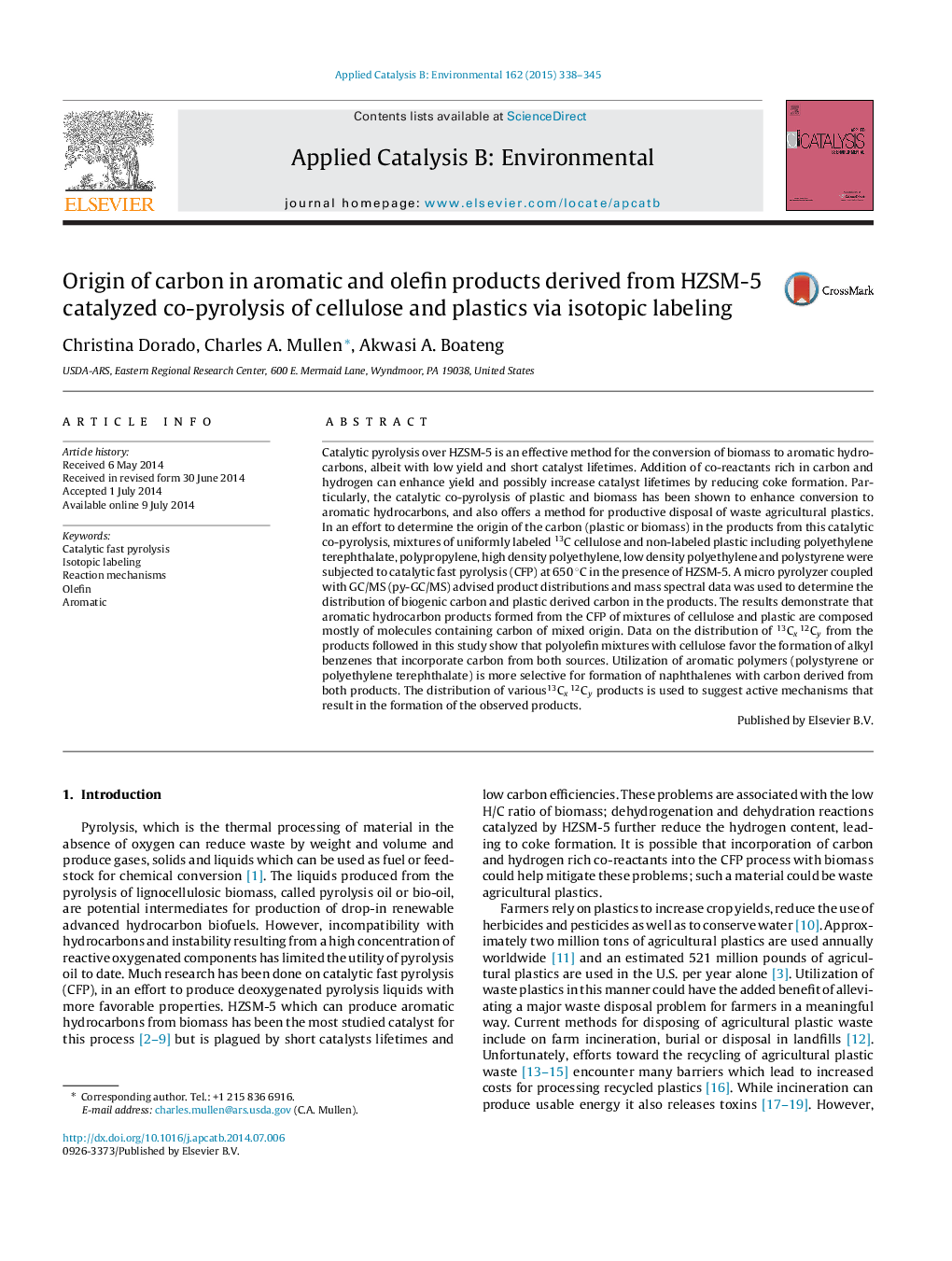| کد مقاله | کد نشریه | سال انتشار | مقاله انگلیسی | نسخه تمام متن |
|---|---|---|---|---|
| 45654 | 46418 | 2015 | 8 صفحه PDF | دانلود رایگان |

• Carbon from plastic and cellulose found in products from catalytic fast pyrolysis.
• Catalytic fast pyrolysis of polyolefin/cellulose favors formation of alkylbenzenes.
• Catalytic fast pyrolysis of aromatic plastics favors formation of naphthalene.
Catalytic pyrolysis over HZSM-5 is an effective method for the conversion of biomass to aromatic hydrocarbons, albeit with low yield and short catalyst lifetimes. Addition of co-reactants rich in carbon and hydrogen can enhance yield and possibly increase catalyst lifetimes by reducing coke formation. Particularly, the catalytic co-pyrolysis of plastic and biomass has been shown to enhance conversion to aromatic hydrocarbons, and also offers a method for productive disposal of waste agricultural plastics. In an effort to determine the origin of the carbon (plastic or biomass) in the products from this catalytic co-pyrolysis, mixtures of uniformly labeled 13C cellulose and non-labeled plastic including polyethylene terephthalate, polypropylene, high density polyethylene, low density polyethylene and polystyrene were subjected to catalytic fast pyrolysis (CFP) at 650 °C in the presence of HZSM-5. A micro pyrolyzer coupled with GC/MS (py-GC/MS) advised product distributions and mass spectral data was used to determine the distribution of biogenic carbon and plastic derived carbon in the products. The results demonstrate that aromatic hydrocarbon products formed from the CFP of mixtures of cellulose and plastic are composed mostly of molecules containing carbon of mixed origin. Data on the distribution of 13Cx 12Cy from the products followed in this study show that polyolefin mixtures with cellulose favor the formation of alkyl benzenes that incorporate carbon from both sources. Utilization of aromatic polymers (polystyrene or polyethylene terephthalate) is more selective for formation of naphthalenes with carbon derived from both products. The distribution of various13Cx 12Cy products is used to suggest active mechanisms that result in the formation of the observed products.
Figure optionsDownload as PowerPoint slide
Journal: Applied Catalysis B: Environmental - Volume 162, January 2015, Pages 338–345